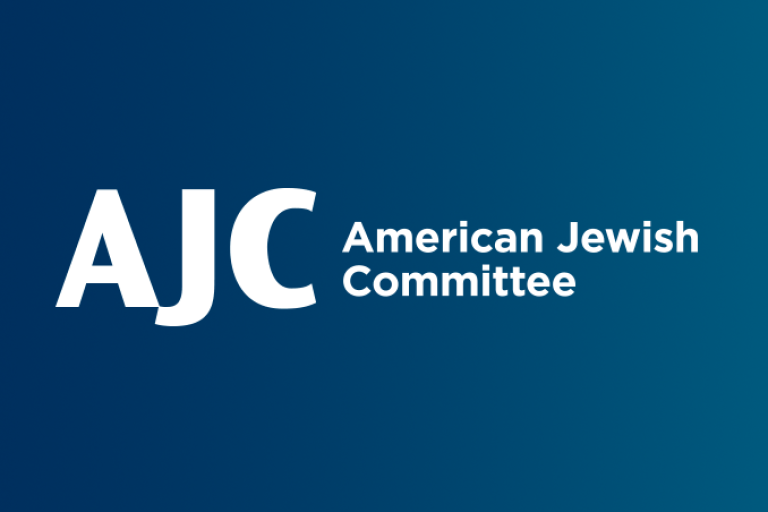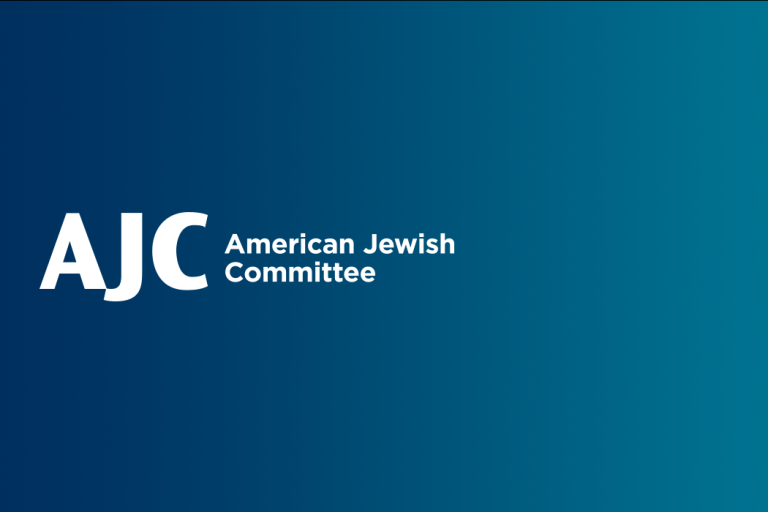June 15, 2022
It takes more than proclamations and laws to eradicate antisemitism. So how can governments around the world stamp out Jew-hatred?
To answer that question, AJC Managing Director of Europe Simone Rodan-Benzaquen interviewed Katharina von Schnurbein, the first European Commission Coordinator on Combating Antisemitism, and Ambassador Deborah Lipstadt, the U.S. Special Envoy to Monitor and Combat Antisemitism, on stage at AJC Global Forum 2022.
Here are five lessons Lipstadt and von Schnurbein have learned as they lead their governments’ efforts to win the fight against antisemitism around the world.
- Interact with, engage, and listen to the Jewish community
When von Schnurbein became the European Union’s antisemitism czar in 2015, she didn’t fully grasp the fear and discomfort felt by many in the Jewish community. She knew there had been deadly attacks on Jews in Europe, but the collateral damage of those attacks and cultural antisemitism wasn’t as obvious. It’s important to listen to what Jewish citizens believe is antisemitism, she said.
“I really didn’t know what I was getting into,” she said. “We had seen lethal attacks in Europe on Jewish communities but really starting to meet with Jewish communities across Europe and being in close touch showed how afraid they were.”
She realized that it was not enough to simply recognize, expose, and fight antisemitism. At the heart of her work was finding ways “to ensure that Jews in Europe see a future for themselves, for their children, and for their grandchildren in Europe and we must do everything it takes to do that.”
For that reason, the 87-point strategy to eradicate antisemitism developed by the commission and published last November includes an aspect of fostering Jewish life in Europe.
- Antisemitism as a conspiracy theory
Lipstadt said too many people fail to take antisemitism seriously because it doesn’t resemble your average, run-of-the-mill prejudice.
“We may not appear as traditional victims of prejudice, but we know things can change on a dime,” said Lipstadt, reminding the audience of how German Jews thrived in the Weimar Republic until the Nazis rose to power in 1933. “And we also know antisemitism, while a prejudice like other prejudices, has the unique characteristic of being a conspiracy theory.”
People also fail to understand the interconnectedness of racism and antisemitism, mistaking them for separate and distinct forms of hatred that exist side by side, Lipstadt said. But antisemitism and racism are not contiguous hatreds. Rioters in Charlottesville who chanted “Jews will not replace us,” and the shooters at the Tree of Life Synagogue in Pittsburgh and the supermarket in Buffalo, New York blamed Jews for conspiring to empower Black people and immigrants in the U.S.
Yet, while many Americans are eager to erase the ugly legacy of racism in the U.S., any mention of antisemitism “cuts the bandwidth of sympathy,” she said.
“If you’re going to take these hatreds, specifically antisemitism, seriously,” Lipstadt said, “you have to recognize they are part of the warp and woof of hatred.”
- Mainstreaming of antisemitism
Curbing violence against Jews committed by far-right, far-left or Islamist extremists is often accomplished with laws that address hate crimes, hate speech, and terrorism. But addressing the newer more subtle wave of antisemitism, much of it related to Israel or the pandemic, is more complicated. It’s also more widespread.
“What we see increasingly is that antisemitism comes really from the center of society,” von Schnurbein said. “We have for a long time placed it into the extremes: extreme right, Muslim extremist, extreme left. … All three of them, of course, can agree if they don’t like each other among themselves, they can agree that the Jew is the enemy.”
“If you have teachers wearing a yellow Star of David and saying I’m not vaccinated it’s not an extremist,” she added. “It’s people who have lost compass and who have this prejudice or lack of understanding of the Holocaust and what it means to distort the Holocaust and trivialize the Holocaust. And now it expresses itself on the street.”
Though many on the far-right blamed Muslim immigration for importing cultural prejudices against Jews, “in fact, the Holocaust happened in Europe without imported antisemitism,” she said. “It was our antisemitism that had grown 2,000 years.”
Von Schnurbein said strategies are in place to connect Arab immigrants – Christian and Muslim – with social workers who make it clear that Jewish life is part of European society. Still, that doesn’t prevent those immigrants from encountering mainstream antisemitism whenever they open a newspaper or log on to social media.
- Train police, prosecutors, and politicians to understand antisemitism
When protesters gather outside a synagogue to chant “Death to the Jews” because Israel is defending itself from terrorist attacks, that is not only antisemitic, but also von Schnurbein said, it is undemocratic. Fighting antisemitism is not just about protecting Jews. It’s about defending democracy. Governments must actively educate lawmakers and law enforcement about that fact.
“The one aspect I’ve learned is you get politicians to act when they understand that it’s not just a threat against the Jews, it is a threat against our democracy, against our values, against our liberty, against our freedoms,” von Schnurbein said. “When this is understood, then action starts and then things turn around.”
Lipstadt added that antisemitism erodes democracy because it is rooted in conspiracy theories about Jewish control of banks, media, and government institutions.
“If you allow antisemitism to flourish, this idea flourishes and the outcome is a lack of faith in your political system, your financial system, your media, your institutions because they’re all being controlled,” Lipstadt said. “If you have a lack of faith in all that, then democracy is threatened. That’s the offshoot.”
- Be a force multiplier
Lipstadt said she and von Schnurbein were headed to the United Nations to convene a meeting of other antisemitism envoys to explore how they can work together to fight Jew-hatred around the world. The power of collaboration is also evident in the Abraham Accords, which galvanizes Middle Eastern countries that in the past have been purveyors of antisemitism.
“That means they’re taking it seriously,” Lipstadt said. “We all want to figure out how we can work together. How can we be a force multiplier?”
Similarly, von Schnurbein convenes about a dozen Jewish organizations every three months in Brussels to share different perspectives and best practices.
“They’ve found that they are very complementary,” von Schnurbein said. “There is, unfortunately, enough antisemitism out there for people to fight it in their own ways.”


